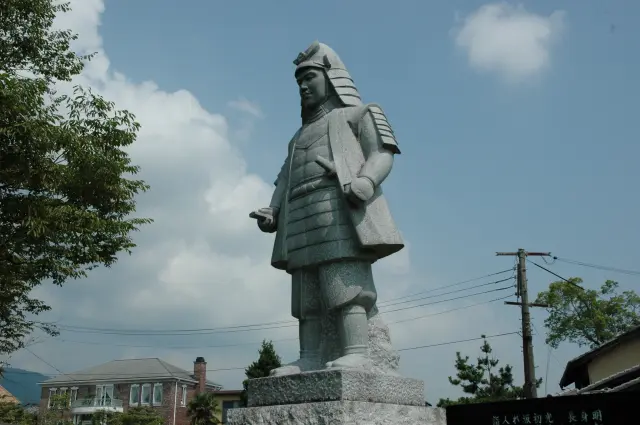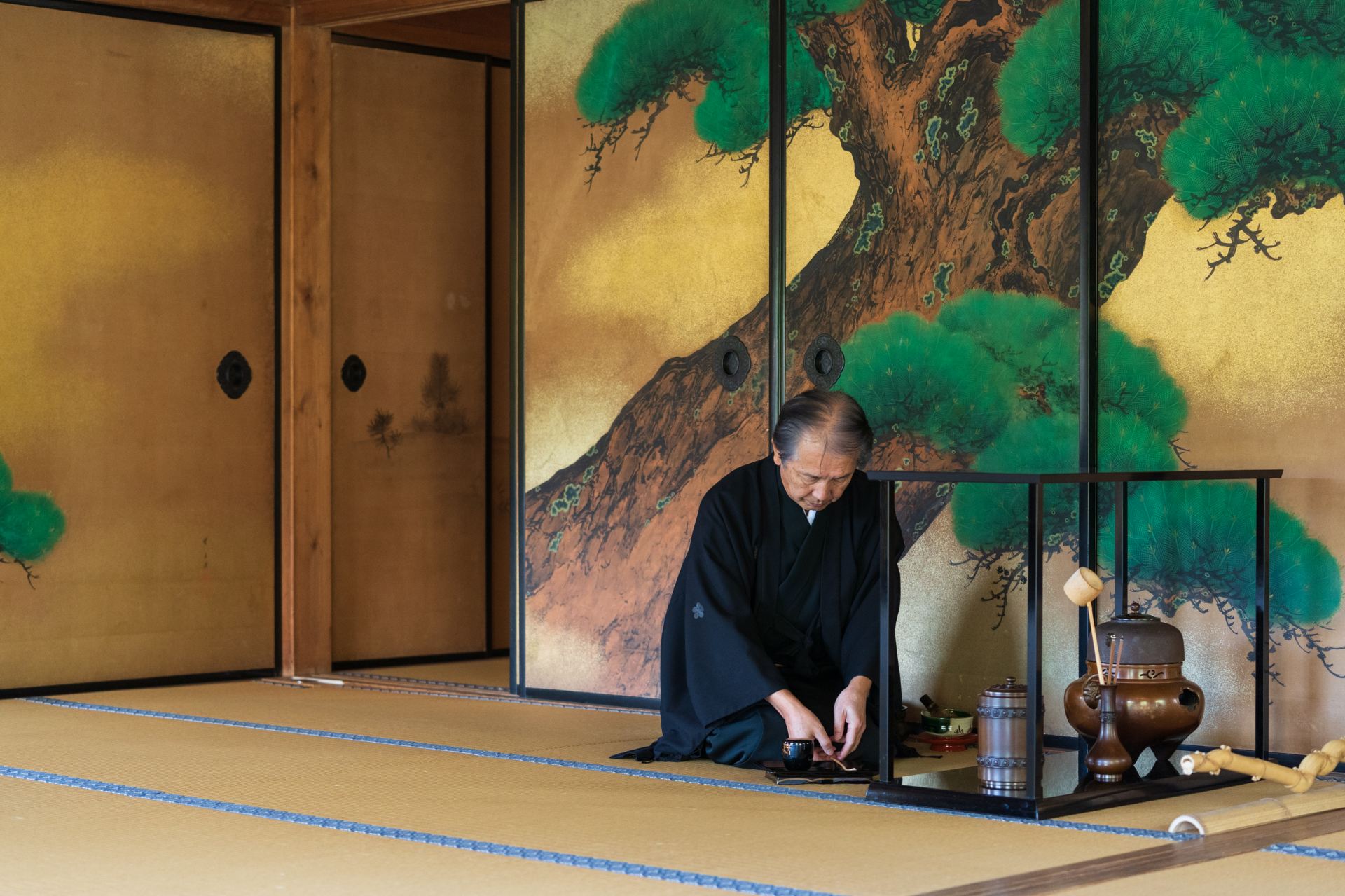
A journey in search of authentic experiences in Kyoto, ancient capital of Japan for 1,200 years
Last update
Kyoto flourished as the capital of Japan for 1,200 years and possesses a rich cultural heritage.
It is a city of old and new, of tradition and innovation. Innovation is born to meet the needs of the times while tradition is preserved and handed down.
There is no city quite like Kyoto in the whole of Japan - a popular tourist destination where streets of old wooden houses and myriad shrines and temples coexist in harmony with new things and cultures.
Things, people, food, cultures –so much in Kyoto is authentic. We are going on a journey in search of authentic experiences not found in any guidebook.
Discovering the appeal of Japanese tea at one of Kyoto’s oldest tea shops founded over 300 years ago
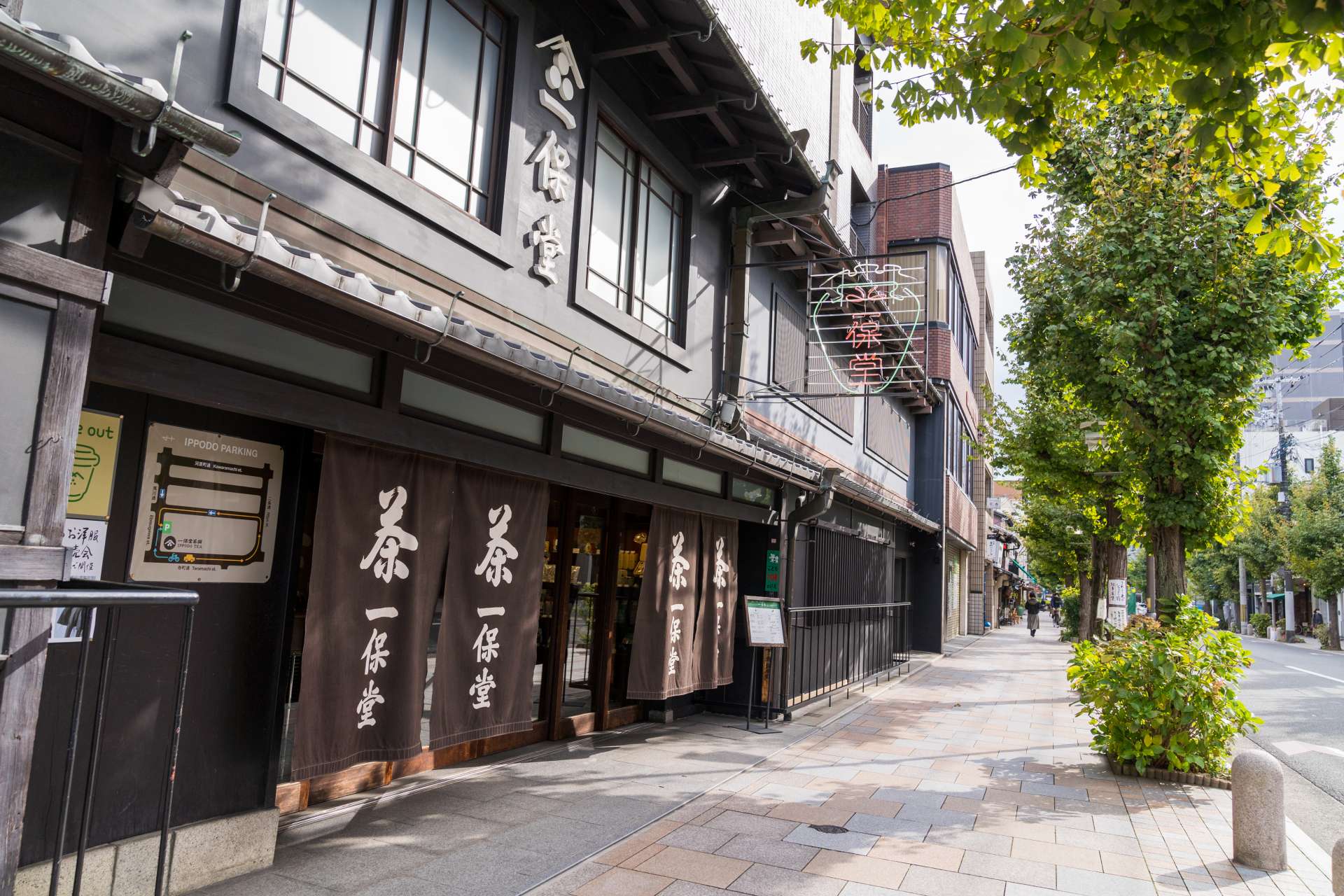
The brown and white dyed noren (shop curtains) stand out against the dignified black walls of the building.
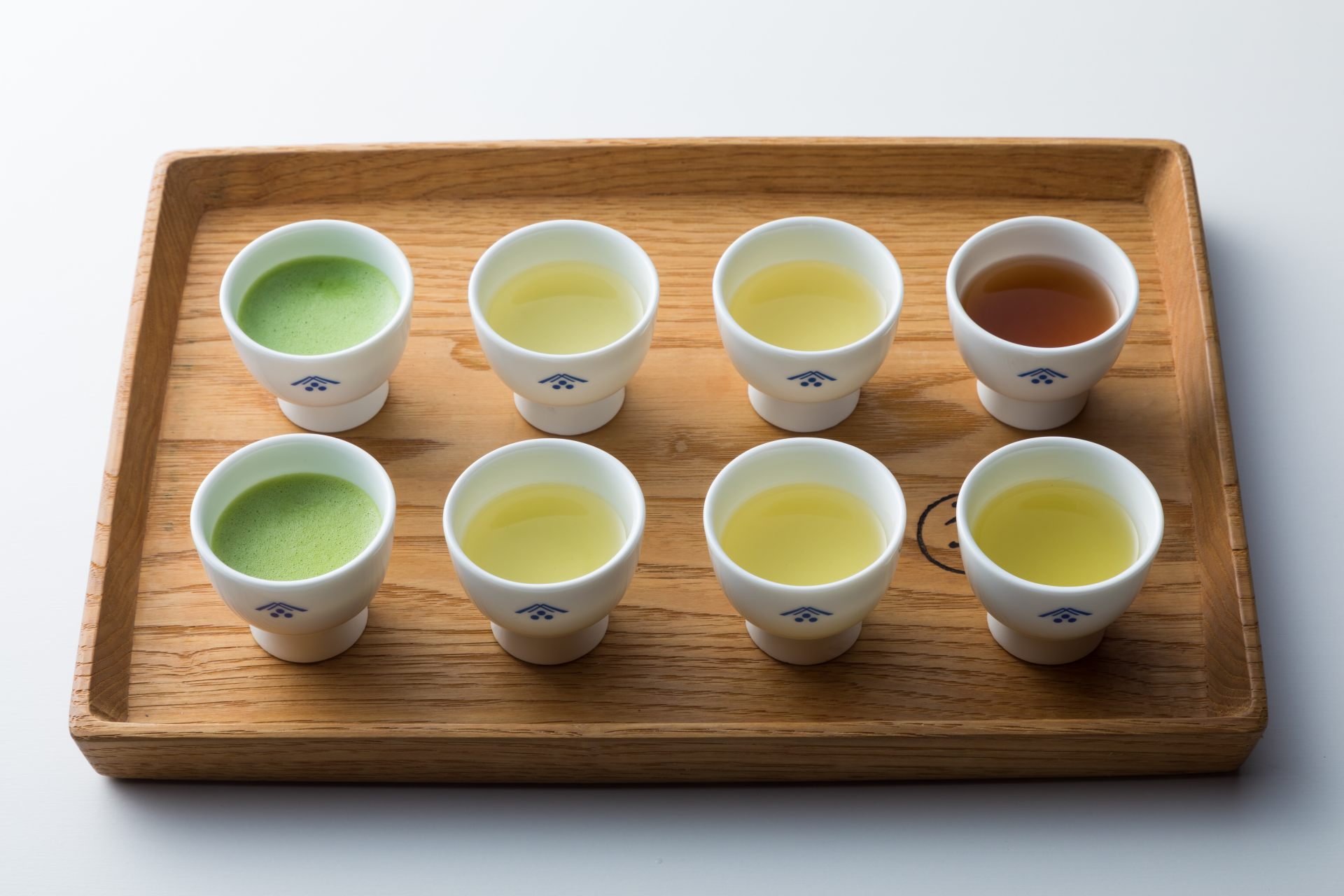
“Japanese tea” – only two words but so many flavors and aromas,
Leaving Kyoto Station, our first destination is Ippodo Tea Kyoto Main Store, a long-established Japanese tea shop that has been in business for over 300 years since its establishment in 1717. Under the name Ippodo meaning “preserve one” which was bestowed on the shop by Prince Yamashina in 1846, the shop not only sells tea but undertakes various initiatives to promote “life with tea.”
This is where we take part in a special Japanese tea workshop. In the tasting session, we discover the difference in taste and aroma of well-known brands. It is surprising how different the tea tastes and smells when you make it yourself. We also learn that it’s not just brand that is important, but how the tea is made.
We get a lesson in how to choose and make tea and experience the richness of “life with tea.”
A feast for the eyes and the taste buds at a MICHELIN 2-star restaurant
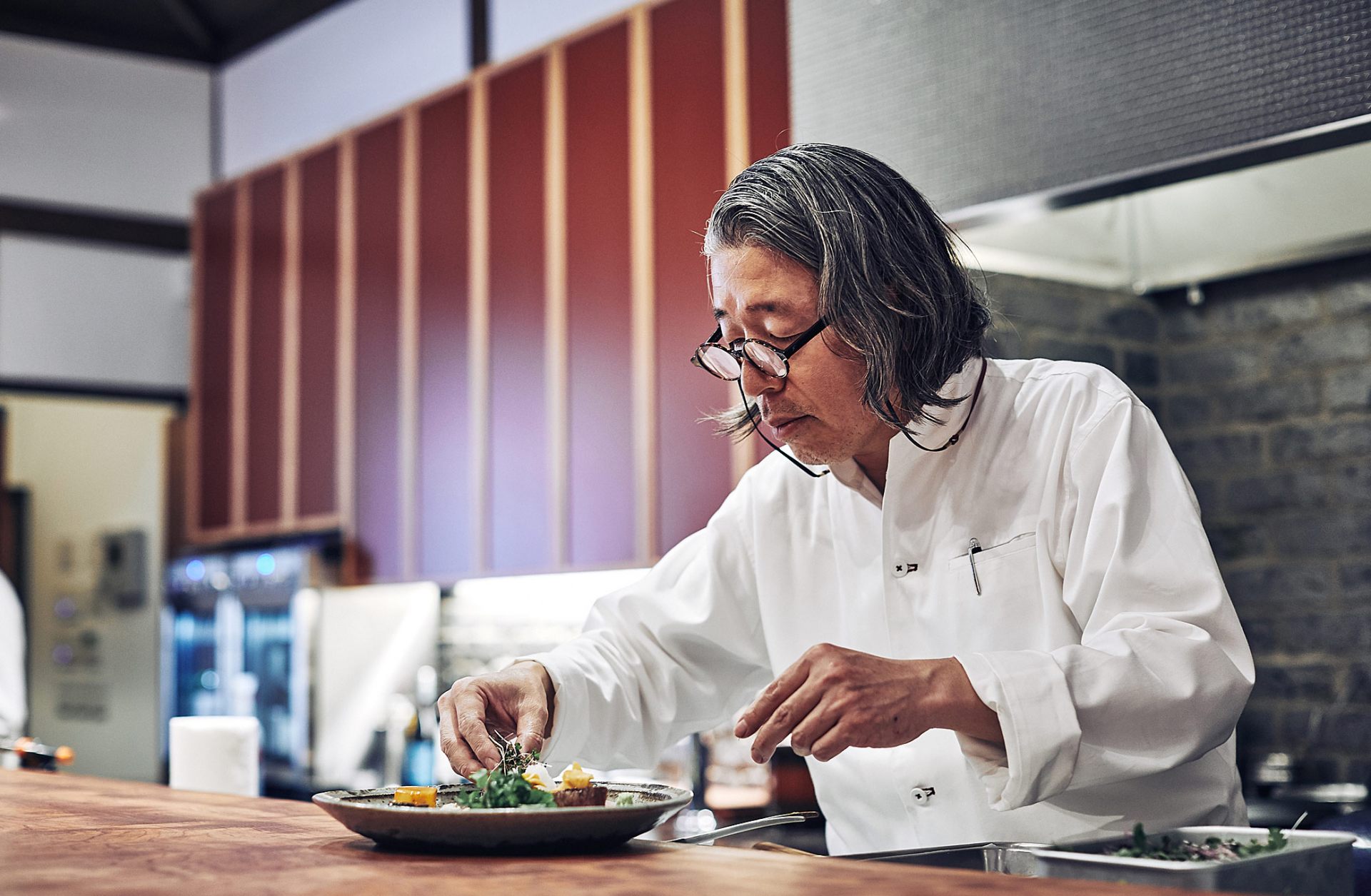
Chef Masayasu Yonemura enthralls gourmets with his innovative cuisine.
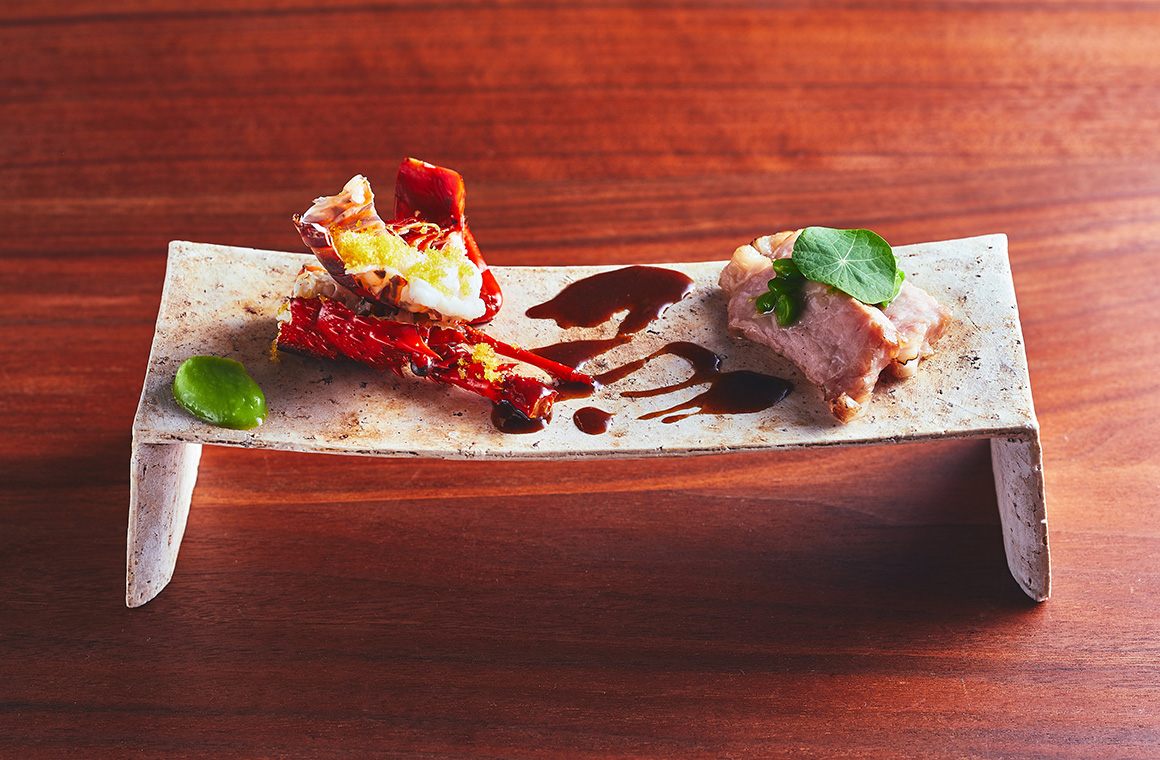
A special lunchtime that surprises and thrills with each dish.
Having experienced Kyoto’s thriving Japanese tea culture through the workshop at the long-established tea shop, we now head to a restaurant to enjoy exquisite Kyoto food culture prepared by a well-known chef.
Shinmonzen Yonemura in the Higashiyama area of Kyoto boasts two stars in the 2020 MICHELIN Guide. Owner-chef Masayasu Yonemura, who calls himself a “phantasmagorical chef,” serves innovative dishes not limited to any one genre.
The gap between the elegant traditional Kyoto townhouse exterior and the stylish interior fills us with expectation, and the tastefully arranged furnishings are pleasing to the eye. Even before the food appears, we are feeling elated.
Our excitement reaches fever pitch when the food eventually arrives. A combination of French and Japanese cuisine but not limited to either, Chef Yonemura’s cuisine evokes a sigh of pleasure.
Special guided tour by a monk of one of Kyoto’s oldest temples
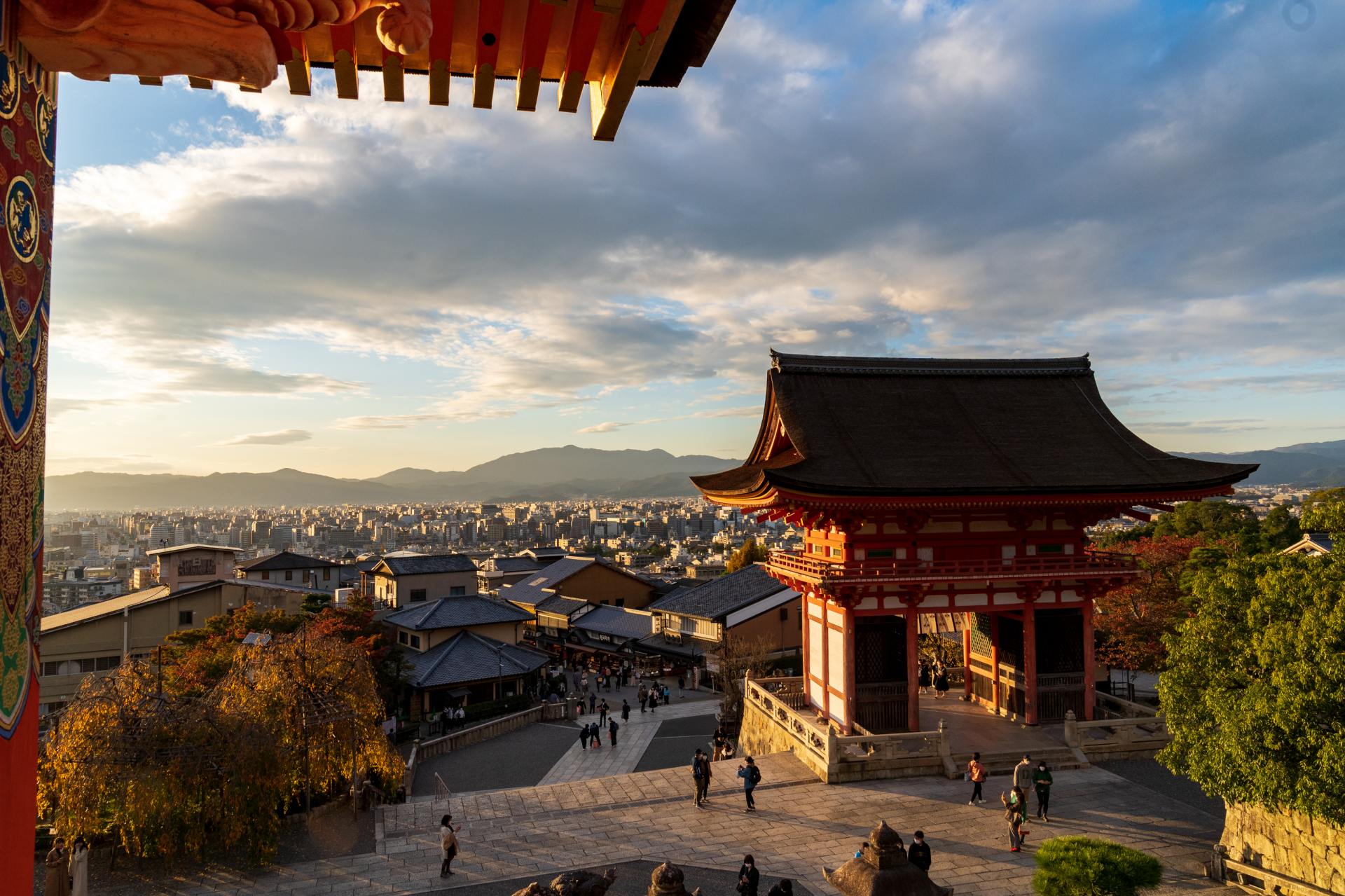
The West Gate, an Important Cultural Property, is usually off-limits to the public.
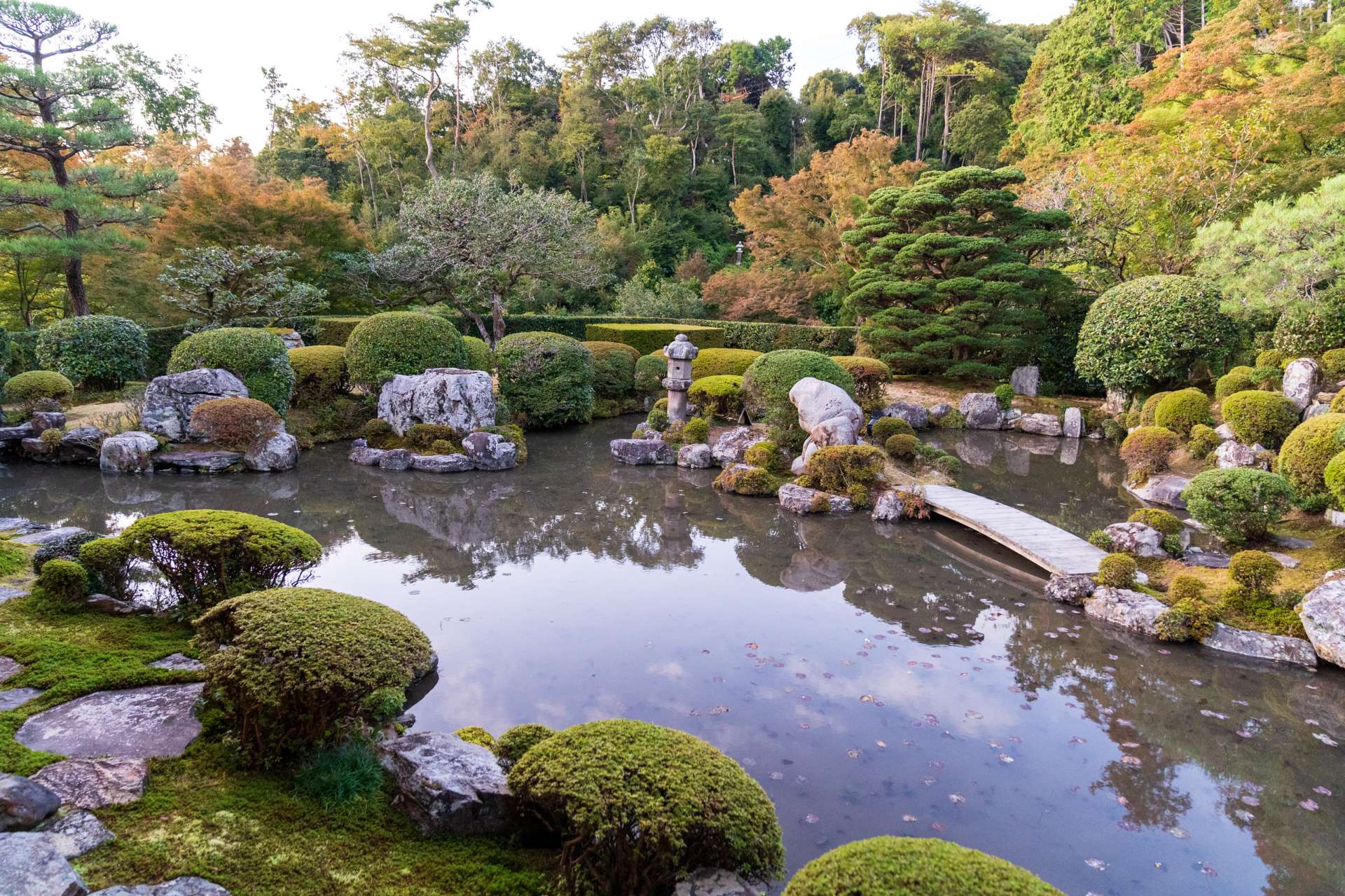
Sitting on the veranda at Jojuin and admiring one of the finest gardens in Japan.
After feasting our eyes and taste buds on the chef’s cuisine, we proceed to Kiyomizudera Temple which is also located in the Higashiyama area.
A special guided viewing of areas of the temple usually off-limits to the public awaits us at Kiyomizudera, one of Kyoto’s most popular temples among Japanese and foreigners alike.
After matcha tea and Japanese sweets in the lavish guest room, Rev. Shoin Onishi dressed in his priestly robes welcomes us to the temple. First, we proceed to the Tahokaku (Tower of Many Treasures) where thousands of Buddha statues adorn the walls and there is a Buddha’s Footprint Stone in the floor. From the upper floor, we toss paper lotus petals toward the footprint stone in a ritual of purification, homage and offering.
Purified in mind and body, we proceed to the West Gate where we admire the view over the city while Rev. Shoin tells us the history of Kyoto and Kiyomizudera. From there, we move on to the Main Hall via the Butai (Stage) and enter the Inner Sanctuary. We calmly join our hands in the presence of the statue of the Eleven-headed Thousand-armed Kannon Bodhisattva.
The tour ends at Jojuin, the temple’s reception hall, where we admire the Moon Garden, one of Japan’s finest gardens created by Kobori Enshu.
In this special viewing, Rev. Shoin communicated his desire that “regardless of religion or faith, I want you to get to know the temple.”
A special overnight stay in a high-ranking monzeki temple all to myself
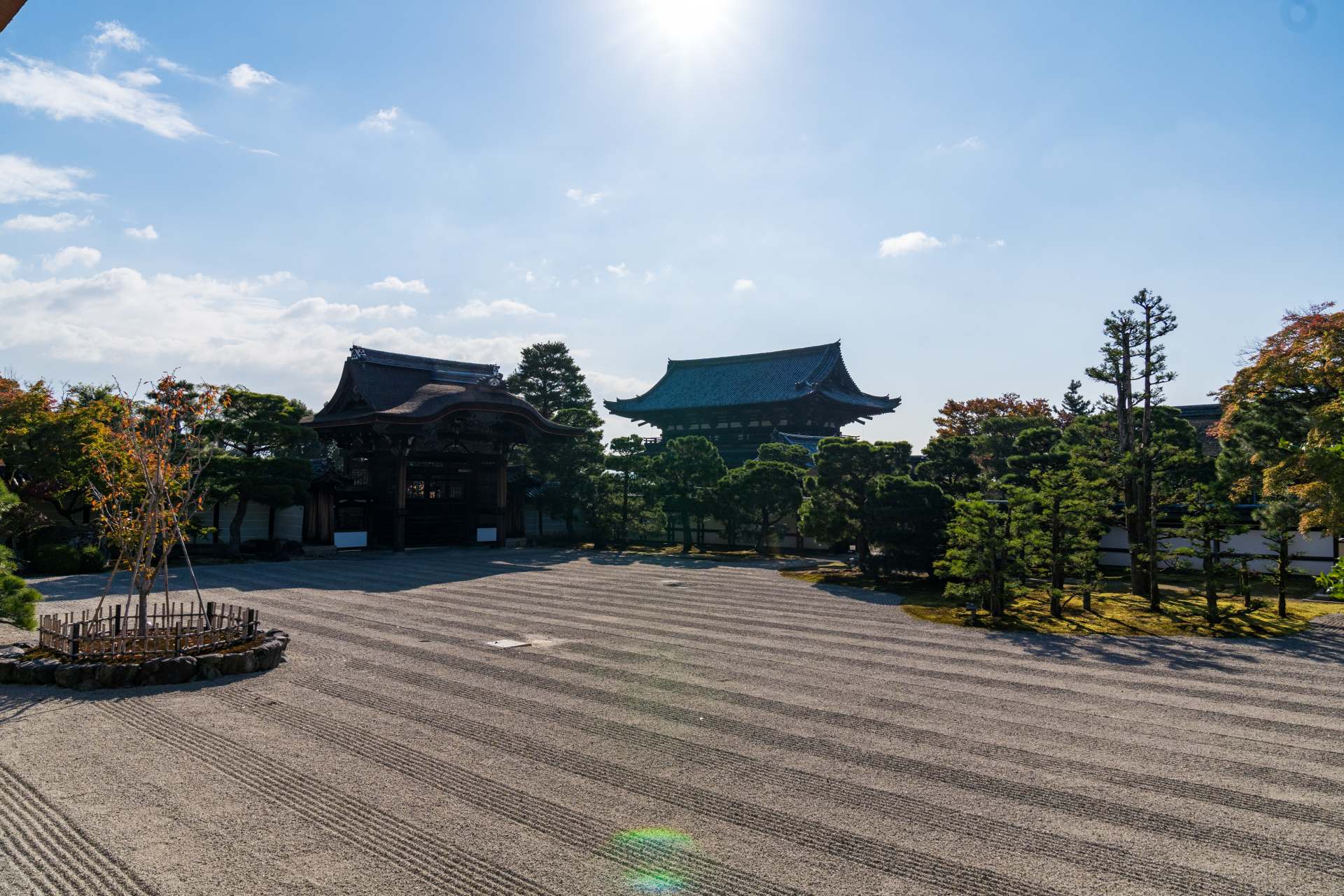
In the cool, clear early morning air, the view of the garden from the palace is magnificent.
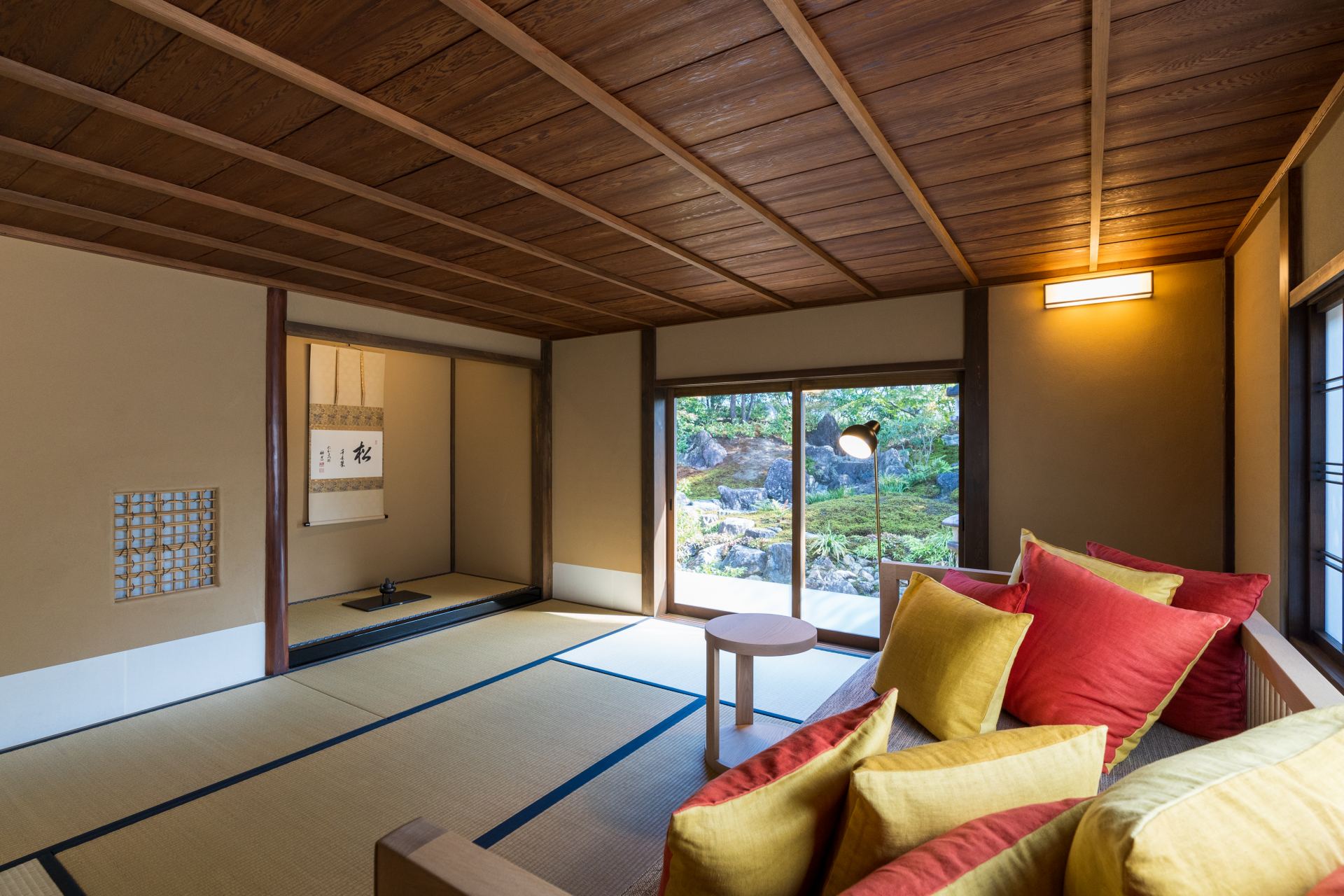
Shorinan, a private temple lodging in a corner of the vast grounds.
After the special viewing of the famous Kiyomizudera Temple with its long history in the ancient capital, it is time to head to our next destination.
From Higashiyama we pass through the city center and go straight to Omuro. We arrive at Ninnaji Temple, a high-ranking monzeki temple also known as Omuro Imperial Palace. Ninnaji is one of Kyoto’s best known temples and this is where we will spend the night.
After checking in at Shorinan, a temple lodging that only accepts one group per night, one of the monks takes us on a special tour of the palace and temple buildings. The view of the garden from the palace corridor is breathtaking.
From when the gate is closed in the evening until it is opened again the next morning, the lodging is ours exclusively. Dinner is a special menu from Kaiseki Tsujitome, a famous chakaiseki (tea ceremony cuisine) restaurant, served in the palace. After dinner, we enjoy a private stroll in the grounds, which are lit up, in peace and solitude.
Enveloped in the mysterious atmosphere and protected by Buddha, we are aware of night advancing in the ancient capital. It is such a special night that we wish time would stand still.
Immersing ourselves in the world of Noh through a workshop and a performance
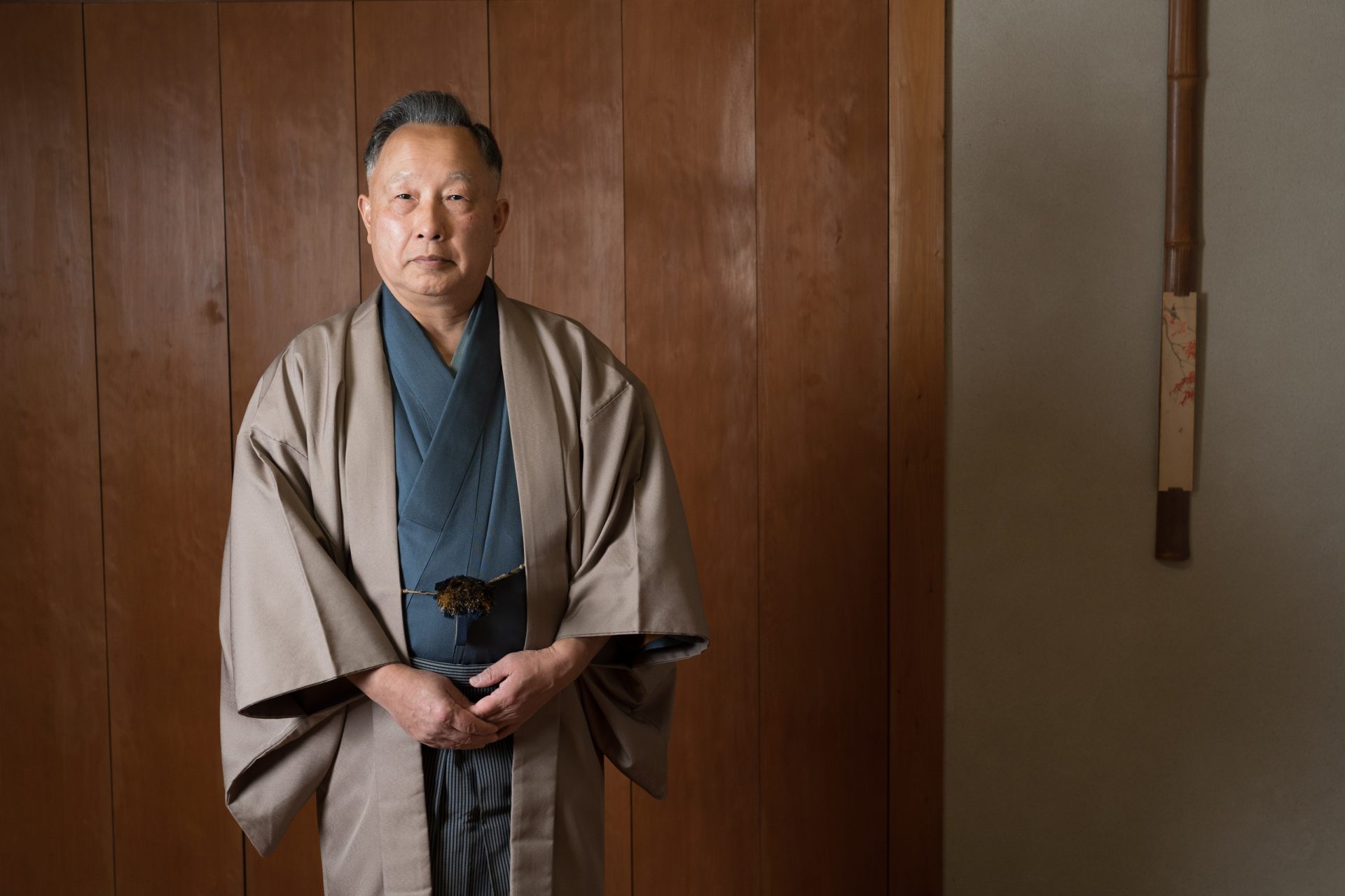
Michikazu Taneda, Kongo School Noh Actor and Important Intangible Cultural Heritage holder.
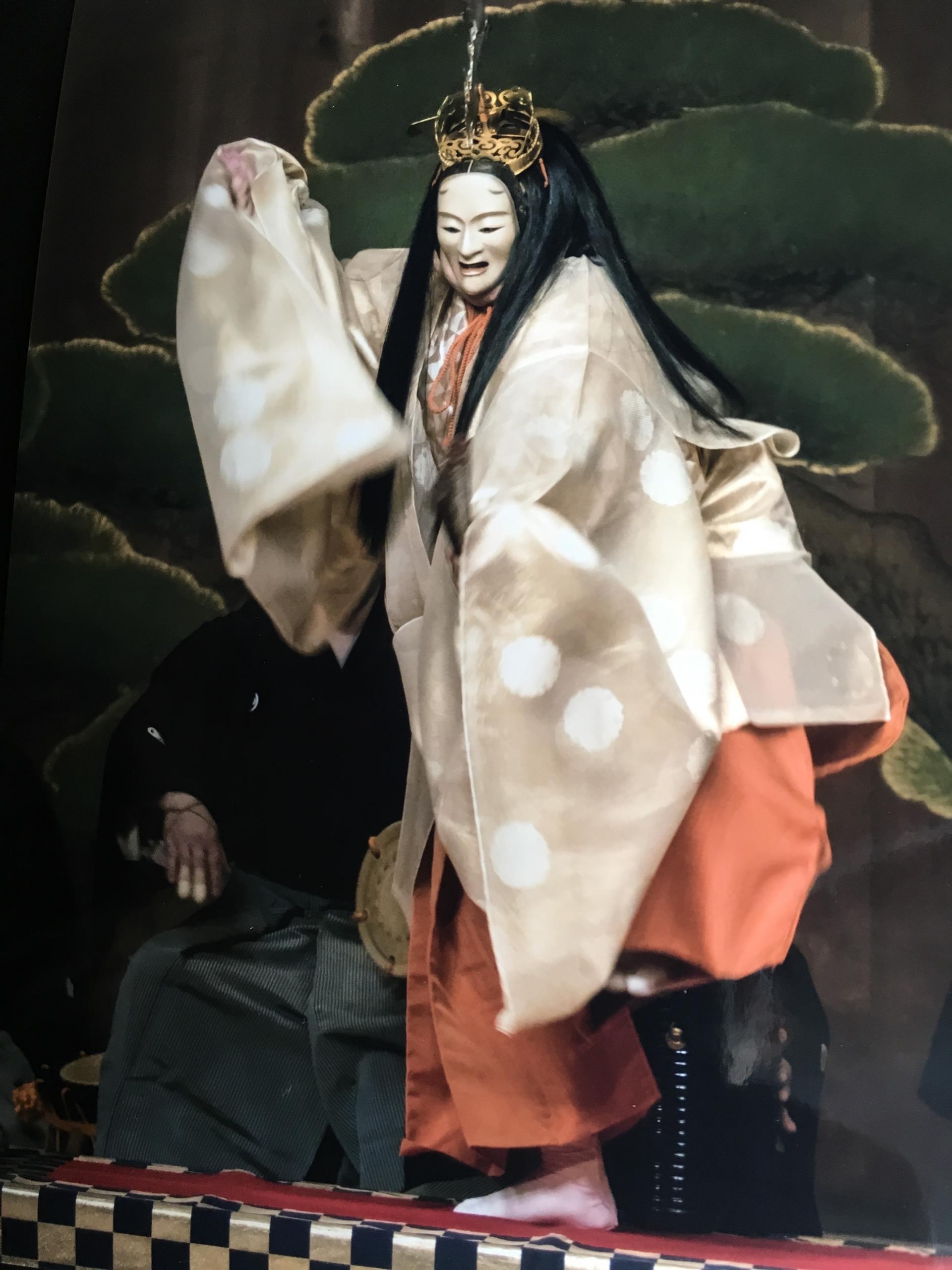
Watching Mr. Taneda perform, we are transported to a world of delicate beauty.
After a night in our private lodging, Day 2 gets off to a brisk start with an early morning service in the Kondo (Main Hall) which has been designated as a National Treasure. After shojin-ryori (Buddhist vegetarian cuisine) breakfast, we check out just as the gates are opening to the public. Our first destination this day is the Kongo Noh Theatre, close to Kyoto Imperial Palace where the Emperor once lived. The Kongo School, one of five schools of Noh shite-kata or main performers, is the only school whose head lives in the Kansai region.
We are met by Michikazu Taneda, Noh actor and holder of Important Intangible Cultural Heritage. A prominent figure in the world of Noh, he has performed and held workshops in Europe, the US and other countries as a Cultural Envoy of the Agency for Cultural Affairs.
Under Mr. Taneda’s instruction, we first of all take part in a workshop on suriashi (shuffling the feet), shosa (posture) and mai (dance). Through the workshop, we learn the basics of Noh. Next, we watch a Noh play featuring Mr. Taneda as the main character. We grasp the meaning of “the world of delicate beauty” that we have just learned about from Mr. Taneda while being overwhelmed by the beauty of the acting and dancing, not to mention the chanting that reverberates through the theatre and pulses through our bodies.
Marveling at skillfully crafted tempura at one of Kyoto’s top restaurants
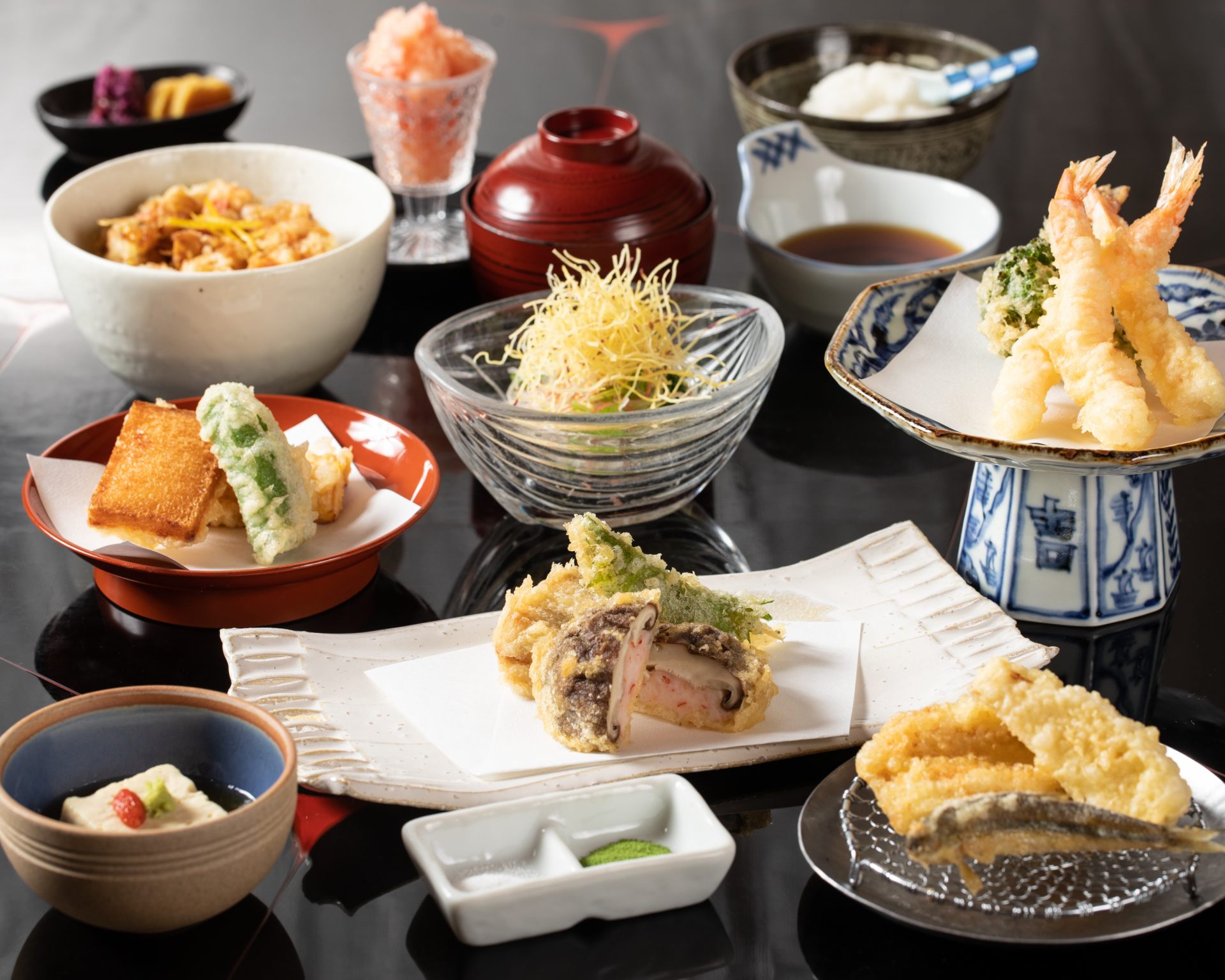
Exquisite cuisine crafted from seasonal ingredients by a skilled chef.
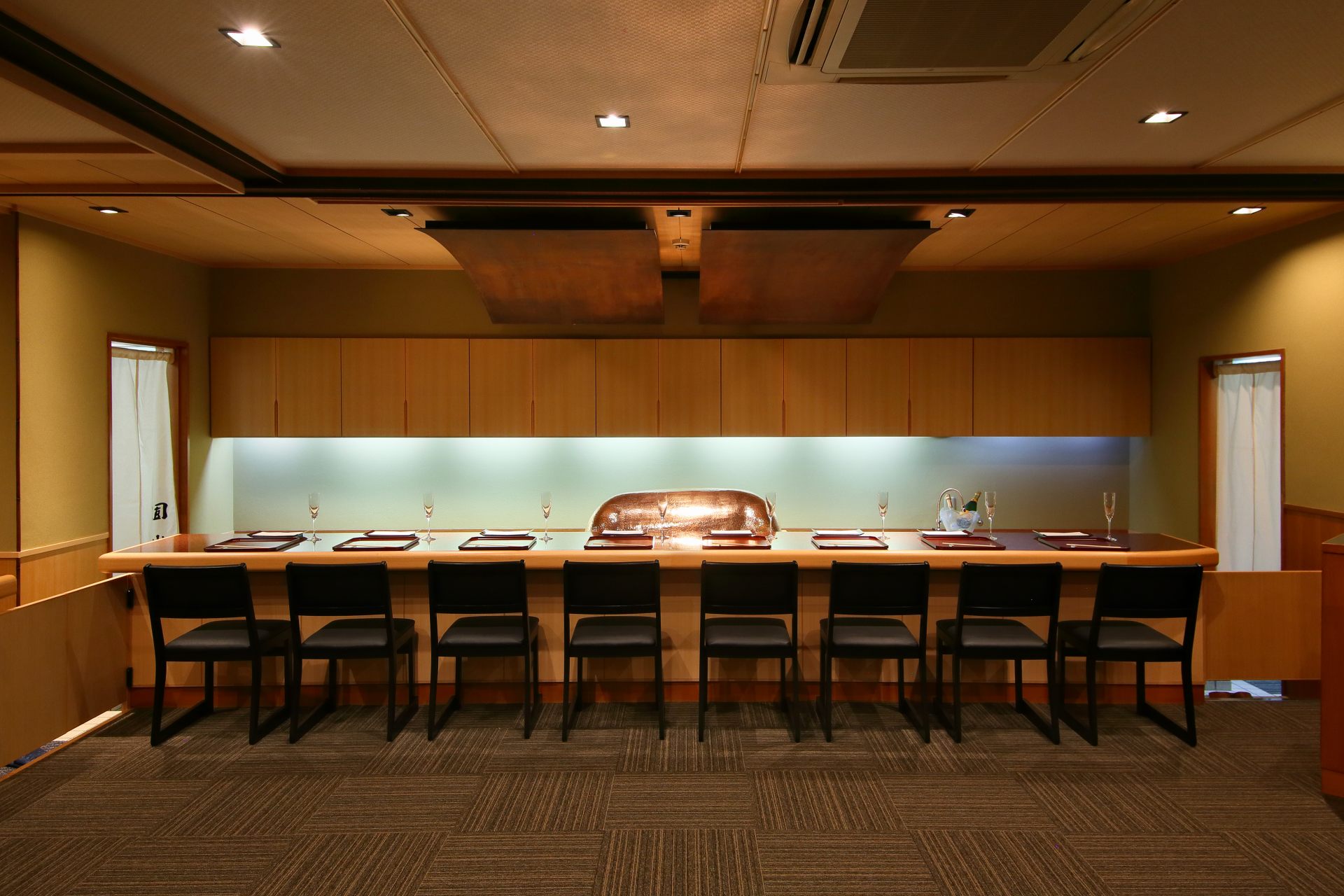
You can watch the chef close up from the counter seats.
The workshop and performance by Michikazu Taneda, a leading actor in the world of Noh, concluded the morning’s program. We now head to Okazaki area where Heian Shrine is located for lunch.
The restaurant, Tempura Endo Okazaki-tei, stands on a quiet street on the west side of Heian Shrine. We enjoy the signature dish of a restaurant synonymous with tempura in Kyoto, the center of Japanese cuisine.
We are impressed by the simple, unembellished design and cleanliness of the traditional Japanese-style interior. Of the various kinds of seating available, the best seats are at the counter where you get a close-up view of the chef’s exquisite skills.
It is bliss just watching the chef prepare freshly caught seafood, locally grown vegetables and other carefully selected seasonal ingredients. Each mouthful of tempura cooked to perfection draws a sigh of admiration.
Special tea ceremony performed by the Iemoto (Head) of the Fuso branch of the Oribe School at Heian Shrine guest house
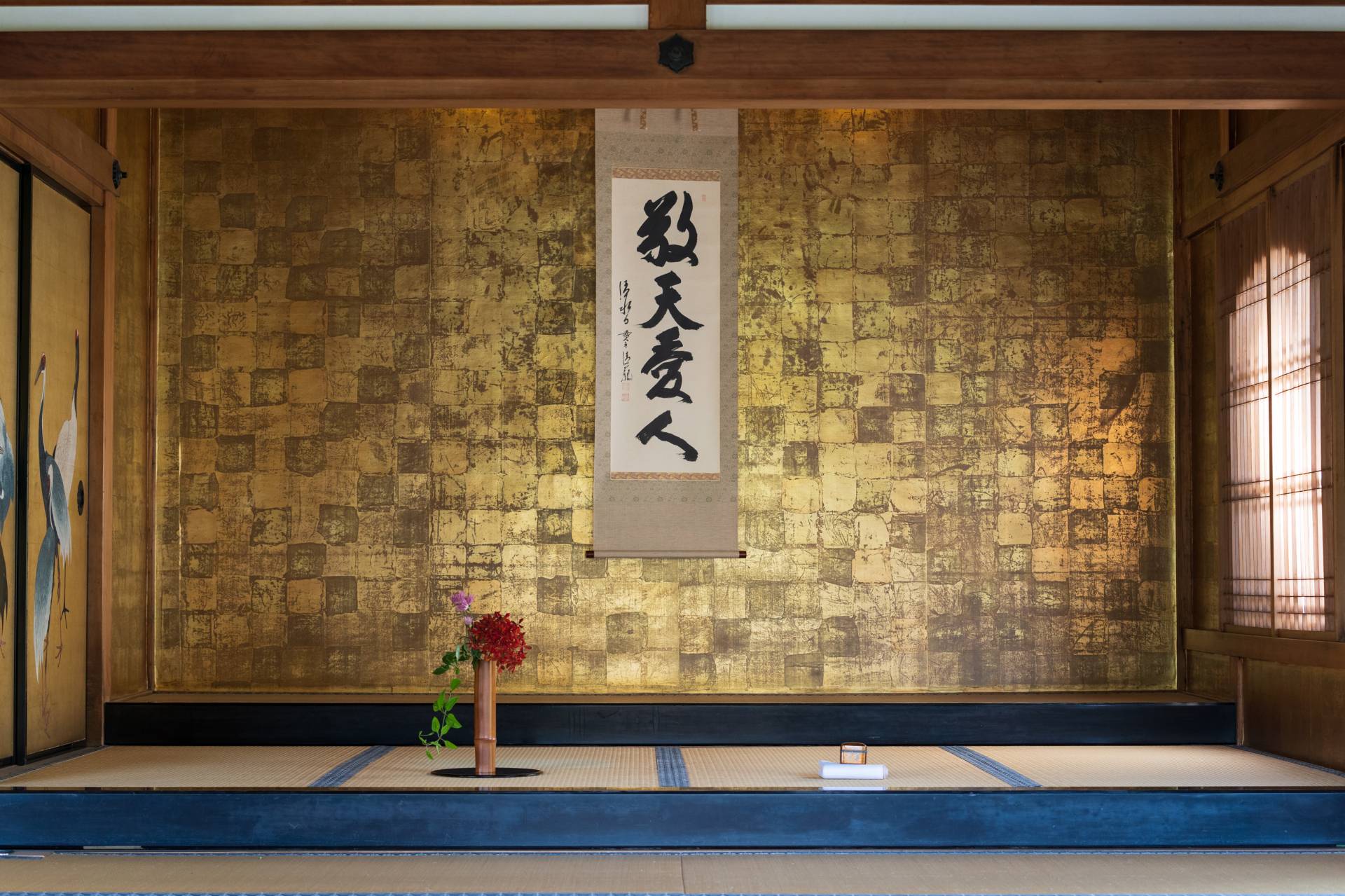
The room was prepared by the iemoto with a hanging scroll and flowers he had arranged.
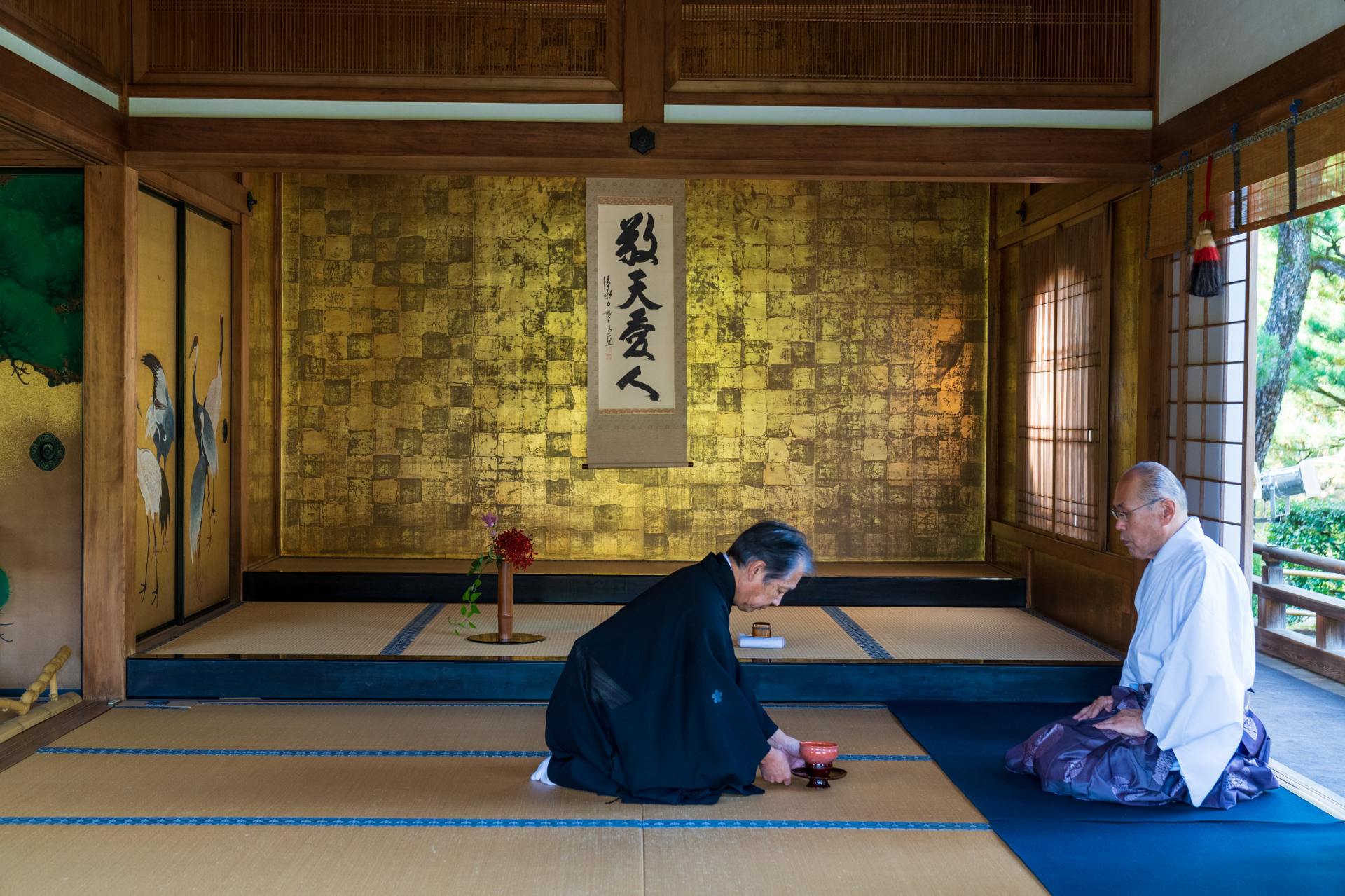
Kinin-date (tea ceremony for the nobility) is only performed by the iemoto for persons of high rank and certainly not for the general public.
After a most delicious meal at a famous tempura restaurant, it is time for the special cultural experience that we have long been looking forward to. The setting is Heian Shrine, not far from the restaurant. Passing under the massive vermillion torii gate, a landmark in the Okazaki area, we enter the shrine from the Otenmon Gate.
After stopping at the Honden (Main Hall) to pray to the gods, we proceed to the Shobikan guest house in the East Garden. The guest house is not open to the public, but this is where we will take part in a tea ceremony performed by the iemoto of the Fuso branch of the Oribe School. First, we are welcomed by his pupils with tea served in the manner of “futatsugashira.” This is the first time for us to be served tea while standing, which is how it used to be done in Buddhist rituals. We are reminded again of the profoundness of the tea ceremony.
Then it is time for Iemoto Beihaku Ozaki to perform “kinin-date,” the tea ceremony only for persons of high rank. It is no exaggeration to say that we will remember having tea prepared for us by the iemoto for the rest of our lives.
Shown round a famous garden in Kyoto by landscape gardener Chisao Shigemori
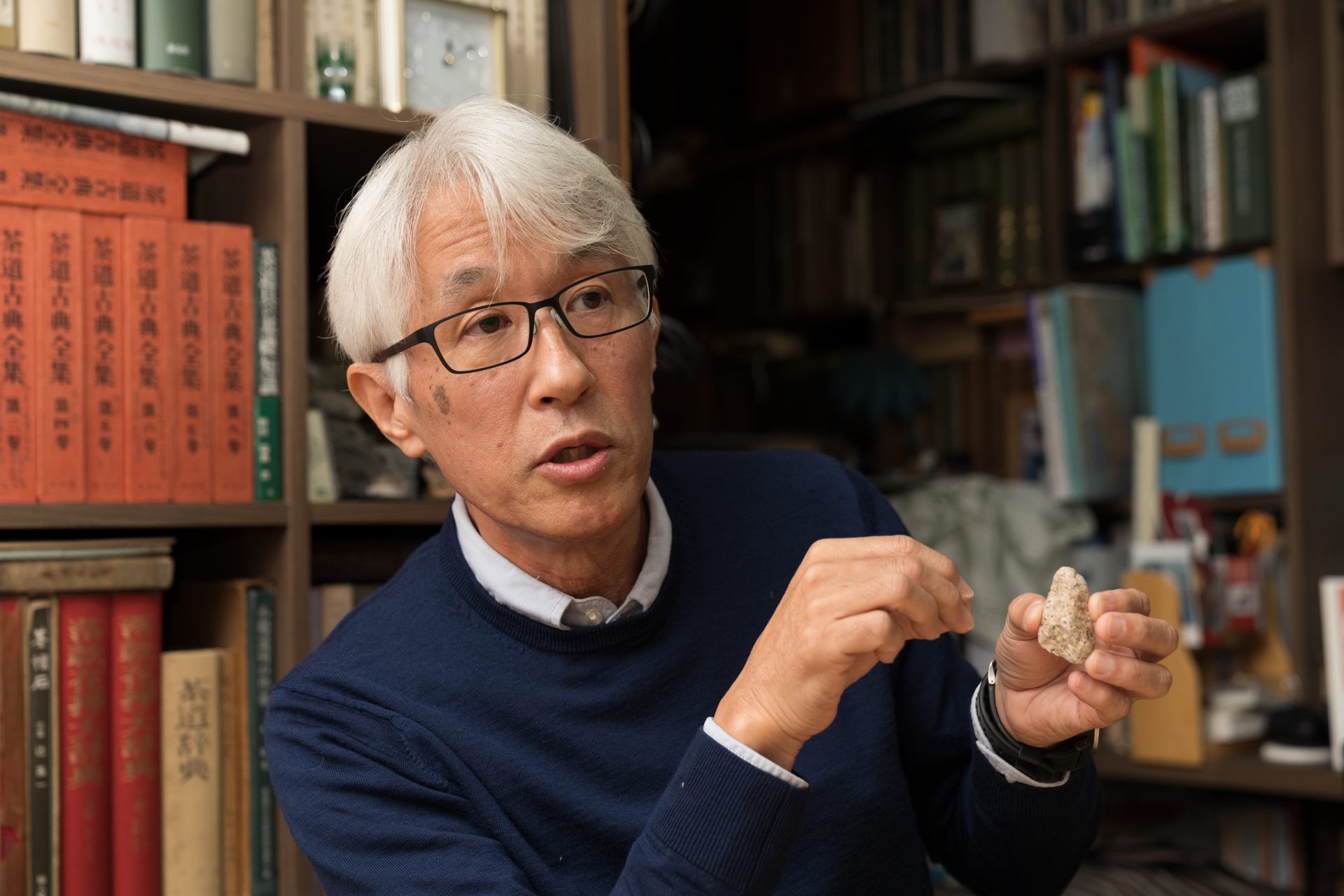
Chisao Shigemori, landscape gardener and president of Shigemori Garden Design Laboratory.
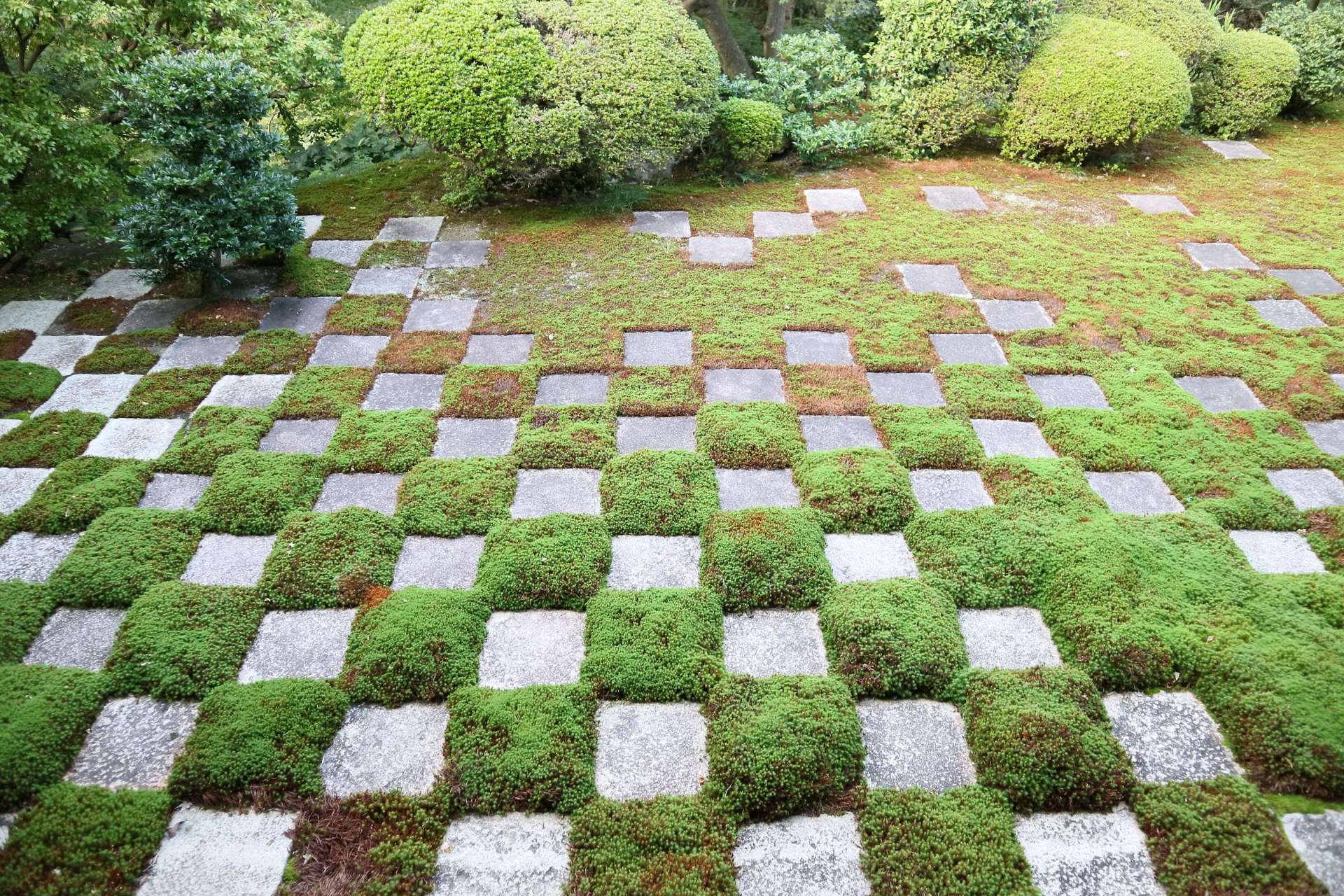
West Garden of Tofukuji Hojo Garden, also known as Hasso-no-Niwa.
The checkered pattern of stones and moss creates an impressive effect.
(c)Chisao Shigemori
Our Kyoto trip, full of special experiences, is nearly at an end. It ends with a visit to some of the finest Japanese gardens in Kyoto.
Our guide is Chisao Shigemori, grandson of famous gardener Mirei Shigemori. The opportunity to be shown round gardens designed by one of the most famous master gardeners of modern times by Mr. Shigemori is rare indeed.
Our first destination is Tofukuji Temple, a Zen temple famous for its autumn colors and garden. We visit the Honbo Garden and the four Hasso-no-Niwa gardens around the Hojo (Abbot’s Quarters). As you would expect of a masterpiece of modern Japanese gardening, its magnificence is evident even to an amateur. Our admiration goes up a notch when Mr. Shigemori explains what to look for and talks about the skills that have gone into making the garden, such as the meaning of the raked gravel waves and stones, the reason there are no footprints, and how sand and moss are used to represent mountains in nature. At Ikkain, which is not normally open to the public, we visit Hofutsuseki and Kokozan gardens and watch the sand being raked. We were vaguely aware of the charm of Japanese gardens before, but now their appeal and attraction is clear.
Everything we saw, everything we heard, everything we ate – so many authentic things we experienced in Kyoto, ancient capital of Japan for 1,200 years. This was a special trip, unlike any ordinary sightseeing tour. It was a journey in pursuit of encounters with the real Kyoto.
By personally visiting Kyoto and experiencing and telling about the wonderful culture and tradition we encounter there, we hope we can be some help in ensuring that charming tradition and culture of Kyoto is passed down to the next generation.
Check also...
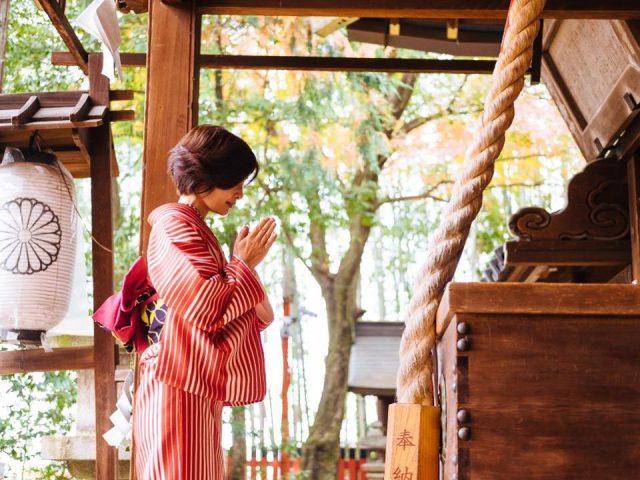
The Basics of Shrine Visiting! Must-Know Information and Some Recommended Shrines in Japan

Consider your accommodation in the Kansai area!

Restrictions on Large Baggage

Hidden Stories in Stone: Exploring Japan’s Castle Walls

Feel Like a Lord: Castle with Stunning Panorama Views

Experience the True Essence of Japan through Castles, Cultural Treasures, and Timeless Gardens
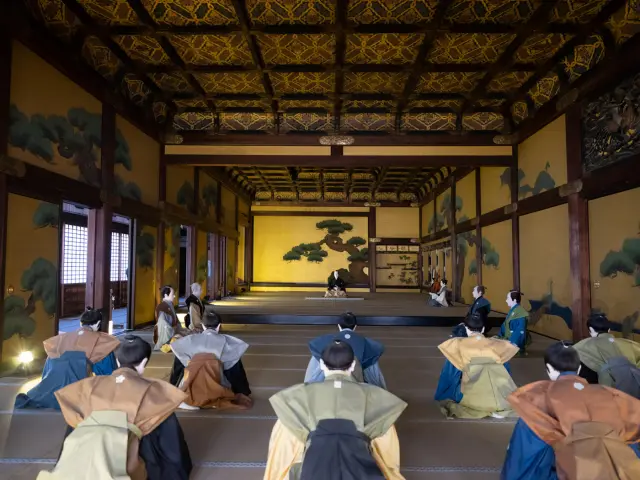
Castles of Tokugawa Ieyasu
